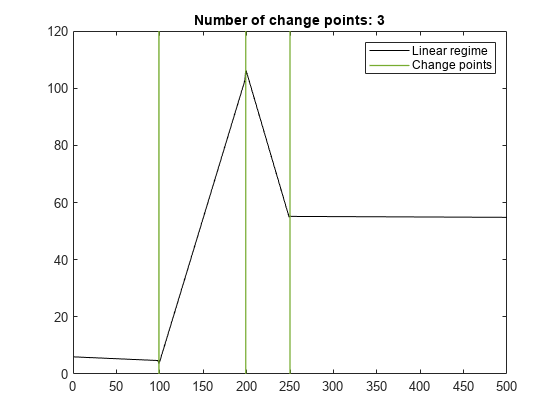Find Change Points
Find abrupt changes in data in the Live Editor
Open the Task
To add the Find Change Points task to a live script in the MATLAB Editor:
On the Live Editor tab, select Task > Find Change Points.
In a code block in the script, type a relevant keyword, such as
change,find,variance, orlinear. SelectFind Change Pointsfrom the suggested command completions. For some keywords, the task automatically updates one or more corresponding parameters.



